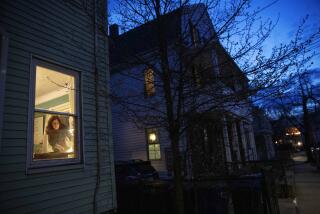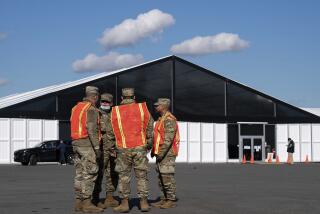New York Ebola patient’s movements raise concern
He rode the crowded subways. He strolled through a popular park. He stopped for coffee, ate a meal in a restaurant, went jogging, bowled with friends and spent time with his fiancee in their Manhattan apartment.
Dr. Craig Spencer, the nation’s newest Ebola patient, did what millions of New Yorkers do in their spare time. But on Friday, word that he did those things days after treating Ebola victims in West Africa raised new concern about the systems in place for monitoring healthcare workers.
Spencer, 33, had been volunteering for the medical aid group Doctors Without Borders in Guinea, one of the West African countries hardest hit by Ebola.
His temperature was checked and he filled out questionnaires when he left Guinea and when he arrived at New York’s John F. Kennedy International Airport, officials said. He continued to check his temperature twice a day, in case he developed a fever, one of the first and most common signs of Ebola.
But concerns have been growing in the U.S. that such steps don’t go far enough. On Friday, the governors of New York and New Jersey announced additional measures, including a mandatory quarantine of 21 days — the virus’ maximum known incubation period — for anyone traveling from Liberia, Sierra Leone or Guinea who had direct contact with an Ebola patient, including healthcare workers.
Those who traveled to the affected regions of West Africa but had no contact with Ebola patients will be actively monitored by public health officials and, if necessary, also will be placed in quarantine.
“This is too serious a situation to leave it to the honor system of compliance,” Gov. Andrew Cuomo said at a joint news conference.
Three people, including Spencer’s fiancee, were in quarantine Friday, and healthcare workers were visiting each of them daily to take their temperatures. Health and sanitation crews scoured the bowling alley, the restaurant and the coffee kiosk that Spencer visited before he fell ill.
City officials emphasized that the risk to the public was extremely low.
“New Yorkers who have not been exposed to an infected person’s bodily fluids are not at risk,” New York Mayor Bill de Blasio said at a news conference. “There is no reason for regular New Yorkers to change their daily routine in any way.”
But authorities want to account for every minute of Spencer’s time from when he developed symptoms until he was placed in isolation at Bellevue Hospital, said the city’s health commissioner, Dr. Mary Bassett.
Medical detectives have been conducting detailed interviews with Spencer and those he may have come into contact with. They also have been scanning his Metro and credit card activity. Here is what they have established so far:
Oct. 12: Spencer has his last contact with Ebola patients.
Oct. 14: Spencer leaves Guinea, traveling via Brussels and spending some time in Belgium before continuing on to New York.
Oct. 17: Spencer arrives at JFK in New York on Brussels Airlines Flight 501. He shows no signs of illness.
Oct. 21: Spencer begins feeling fatigued. He visits the High Line park and stops at Blue Bottle Coffee and the Meatball Shop.
Oct. 22: Spencer goes on a 3-mile run along Riverside Drive and in his Harlem neighborhood. He travels by subway to Brooklyn and goes bowling with two friends at the Gutter. He calls an Uber car to take him home.
Oct. 23: Between 10 and 11 a.m., Spencer and his fiancee take temperatures. Spencer has a low-grade fever: 100.3. He contacts Doctors Without Borders, which notifies New York health authorities. EMS crews in protective gear go to Spencer’s apartment and take him by ambulance to Bellevue Hospital, with a police escort. He is placed in isolation. At about 9 p.m., city officials announce he tested positive for Ebola.
Oct. 24: The Centers of Disease Control and Prevention confirms the diagnosis.
Susman reported from New York and Zavis from Los Angeles.
More to Read
Start your day right
Sign up for Essential California for news, features and recommendations from the L.A. Times and beyond in your inbox six days a week.
You may occasionally receive promotional content from the Los Angeles Times.








